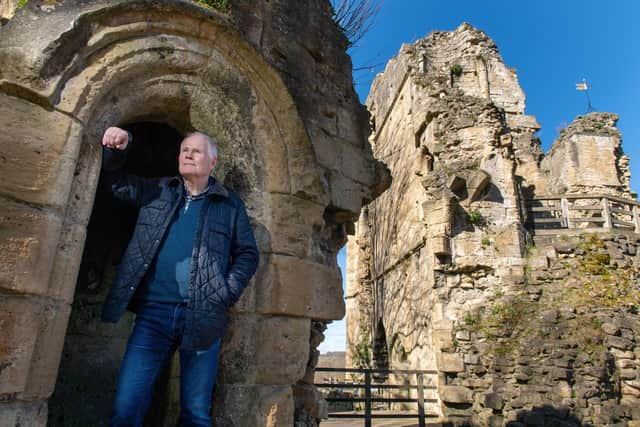Knaresborough historian's plea to King Charles to visit town in honour of its role in historic royal tradition
and live on Freeview channel 276
Harrogate resident Bernard Higgins has been corresponding with Buckingham Palace since 2018 in an attempt to get, firstly, Queen Elizabeth II and, more recently, King Charles III and Queen Camilla to visit Knaresborough for the Royal Maundy service.
The centuries-old Easter tradition has been held annually on Maundy Thursday, the day before Good Friday, for nearly 1,000 years.
Advertisement
Hide AdAdvertisement
Hide AdThis year saw King Charles make the trip to York Minster to ceremonially distributes small silver coins known as "Maundy money" as symbolic alms to elderly recipients.


In 1985, the late Queen visited Ripon Cathedral to perform the same historic duty.
But Mr Higgins, who lives in Harrogate, is concerned that Knaresborough has always missed out – even though the first recorded Royal Maundy Service took place at Knaresborough Castle in 1210 when its most famous resident King John distributed alms.
"With the greatest respect, the question is why has no monarch has been to Knaresborough to acknowledge and celebrate King John’s Maundy,” said Mr Higgins.
Advertisement
Hide AdAdvertisement
Hide Ad"Up until 1985 when the late Queen visited Ripon Cathedral for the ceremony, the Lord High Almoner and his staff believed the first Royal Maundy Service was at Rochester Castle in 1213.
"That was until late Knaresborough historian Arnold Kellett produced the evidence when he discovered the Rotulus Misea in the National Archives in Kew in the 1970’s which proved King John recorded the very first Riyal Maundy Service when he was resident at Knaresborough Castle during Holy Week 1210.”
The late Mr Kellett unveiled his discovery to the world in the pages of Historic Today magazine in April 1990.
In recent years the baton has been picked up by Mr Higgins, who has been instrumental in the ongoing campaign to restore local legend Blind Jack to his rightful place as a road building pioneer of national importance in the history of industrial England.
Advertisement
Hide AdAdvertisement
Hide AdThere has been little to show so far from years of effort by Mr Higgins to do the same for Knaresborough’s role in the Royal Maundy tradition – except for a stack of correspondence discussing the idea of a royal visit to Knaresborough from Buckingham Palace, the Bishop of Worcester (the Lord High Almoner), the Bishop of Leeds and the Dean of Ripon.
But the recent news that North Yorkshire Council is to explore how to celebrate the 900th anniversary of Knaresborough Castle in 2030, has given Mr Higgins’ campaign new impetus.
“No monarch has been back to do so since King John’s pioneering idea over 813 years ago,” he said.
"With the 900th anniversary of Knaresborough Castle now on the horizon, it’s important to make sure the town’s role in the origins of the Royal Maundy service are remembered and included.”
Advertisement
Hide AdAdvertisement
Hide AdThe deepest roots of the Maundy service go back to 600AD, though the tradition itself has evolved.
Early in her reign, Queen Elizabeth II decided Maundy money should not just be distributed to the people of London, and so she began travelling to various cathedrals or abbeys to give gifts to local people.
The service is thought to commemorate Jesus washing the feet of the Apostles at the Last Supper.